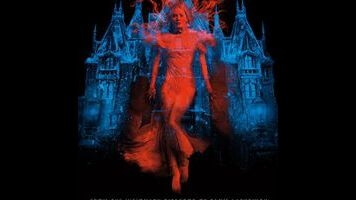Guillermo Del Toro’s Crimson Peak is gorgeous, tragic, and not very scary

Crimson Peak may end up being brought down by its own marketing, but to be fair, it’s a difficult movie to sell. Billed as a haunted-house horror movie, it’s actually a violent R-rated romance geared toward the sensibilities of “14-year-old bookish girls,” as director Guillermo Del Toro described it in a recent preview screening. As in Del Toro’s chilling The Devil’s Backbone, the apparitions represent the sins of the past, writ here on a familial instead of a national scale. As such, they’re more tragic than terrifying, which, on the one hand, perfectly fits the swooning Gothic atmosphere. On the other, this means the scariest scenes of the movie appear early on, with diminishing thrills after that.
Mia Wasikowska stars as American heiress Edith Cushing, an aspiring author who, in a particularly on-the-nose bit of dialogue, is described as “our very own Jane Austen,” to which she replies, “I’d prefer to be Mary Shelley.” While typing up one of her stories at her wealthy industrialist father’s office, Edith meets Thomas Sharpe (Tom Hiddleston, looking appropriately anemic), an English baronet who retains his ancestral title, if not the family fortune. Although she’s more fond of reading than dancing, Edith falls quickly for the romantic, penniless aristocrat, and he and his sister Lucille (Jessica Chastain) wriggle their way into the Cushings’ social circle. Soon, Thomas proposes to Edith and whisks her away to his ancestral home, Allerdale Hall, where she must contend with nightly visits from mournful ghosts as well as Lucille’s thin-lipped hatred.
Chastain’s performance—icy-cold, unblinking, and perpetually teetering on the edge of deranged—is a highlight. (A scene where she feeds porridge to a helpless Wasikowska, painfully scraping a metal spoon against a ceramic bowl as she calmly describes her abusive father’s violent outbursts, is particularly masterful.) The other leads can’t match Chastain’s intensity, however, even though Del Toro and co-writer Matthew Robbins give Wasikowska plenty to do by inverting the damsel-in-distress trope. (Hiddleston, who tellingly flashes the film’s only nudity, mostly serves as a plot device.) Like many of the themes, this inversion is conveyed so deliberately it comes across as overwritten, and the script is laden with heavy-handed foreshadowing and a psychosexual twist many viewers will see coming long before it happens.
Unsurprisingly for a Del Toro film, the production design is the real star of Crimson Peak; the director says his budget was $50 million, but it looks like it cost more. The attention to detail is consistently impressive, with period-accurate Victorian sets and jewel-toned lighting creating an aesthetic best described as “Disney’s Haunted Mansion ride as designed by Mario Bava.” The costumes in particular ought to attract awards-season attention, outfitting Wasikowska in white nightgowns that play up her porcelain-doll looks and Chastain in sumptuous silk and velvet. The design of the house itself and its ghostly inhabitants is equally thoughtful: Allerdale Hall is built atop a deposit of valuable red clay, for example, producing blood-red footprints in the snow, and the wispy plumes of smoke emanating from the restless spirits perfectly mimic the leaves that gently fall through a hole in the dilapidated manor’s ceiling. Against such a beautifully realized backdrop, perhaps any story would appear inadequate.